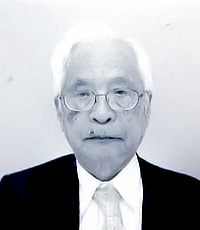Japanese Pioneers
Toshifumi Asakawa

Toshifumi Asakawa was born in Yamanashi Prefecture in 1927. In 1950, after graduating from the Faculty of Science at Kyoto University, he joined the Research Institute for Telecommunications of the Ministry of Telecommunications. He started working for Mitsubishi Electric Corporation in 1962 and moved to Ricoh Company, Ltd. in 1972. He established Newral Systems Co., Ltd. in 1988 and A.S.K. Co., Ltd. in 2003.
He succeeded in making the first prototype transistor in Japan in 1950 when he was working for the Research Institute for Telecommunications. In the Institute, which was spun off from the Electrotechnical Laboratory in 1948, he began research into semiconductor technologies, in anticipation of finding technologies for the future of telecommunications. It was in this context that Asakawa was among the first to work on the trial production of transistors along with his colleague, Shingo Iwase (later an executive director of Sanyo Electric Co., Ltd.). After taking production of a prototype device in hand on the basis of scraps of technical documents obtained through GHQ (General Headquarters, the Supreme Commander for the Allied Powers—GHQ/SCAP), they found that the key ingredient, single-crystal germanium, was not available. There was no choice other way but to obtain a U.S.-made semiconductor detector in Akihabara, Tokyo. They took apart the detector and from their analysis were able to make a prototype point-contact transistor, with two needles making contact at the required points. After that, they were finally able to confirm the amplification phenomenon.
While at Mitsubishi Electric Corporation, he contributed to the establishment of its IC business. At Ricoh, he accepted orders for LSI chips for the Family Computer (Nintendo Entertainment System) game console from Nintendo, using a 6502 as the core CPU along with IP purchased from VLSI Technology Inc. in the U.S.A. and from other companies to establish LSI design technologies based on CPU cores.


